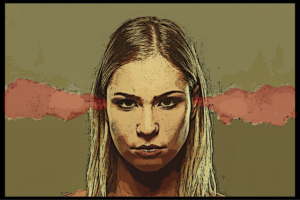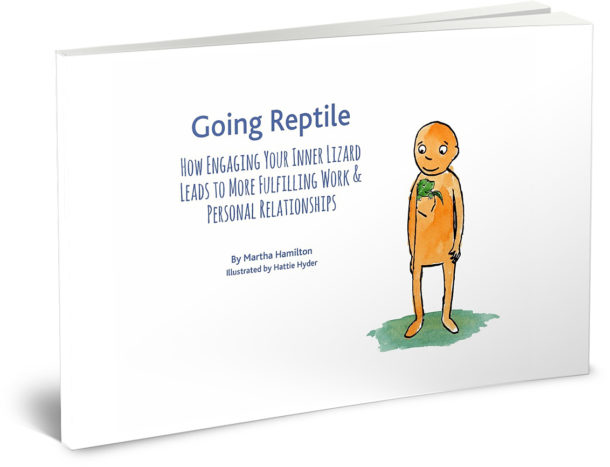
“The launching pad for emotional freedom is always yourself.”
― Judith Orloff
Have you ever had that experience where things just seem to stop working for you? You wake up one day and you realize that you’ve lost touch with the “flow” of your life. Everything around you seems to be a little out of sync – in your job, your personal life, and your creative projects. You’re in a funk!
Over time I’ve come to see these moments in my life not as problems, but as opportunities for growth. The “negative” things that seem to happen in droves during these transitional periods are actually signals from somewhere deep inside us that it’s time for a change. It’s time to become something more and different.
For me, the biggest example of this happened at one point in my 30’s. For years I exhausted myself trying NOT to let anyone (or myself!) see any negative emotions that I was feeling. I did all I could to hide frustration, anger, irritation, or even collapse. I’d avoid, blame, shame, complain, and do all I could; I’d even manipulate to get other people to behave or feel differently.
All of this effort was in service of me working really hard to not to feel what I felt.
It’s humbling to realize that not only was I exhausting myself – likely even more so those around me, I was also ignoring what my system was trying to tell me – what I needed to hear.
At earlier times in my life, my capacity to block everything out was brilliant. No matter what was happening around me or inside me, I could get on with my life, not getting bogged down feeling totally overwhelmed or hopeless.
The good news is that I found ways to navigate and “get over it.” Whatever “it” was in that moment.
The bad news is that my capacity for adapting or navigating became such a part of me, that is was no longer just a capacity. It became my new normal. This unflappability had become “me.” And that began to cause a lot of problems.
As I grew older, and developed new more advanced capacities, these old “grin and bear it” strategies stayed in place, doing their job day in and day out. As my old way of being started to conflict with my new life, my job, my friendships, and my relationships started showing me that they (and I) needed something different. Those strategies that had worked so well when I was younger had become stale, they’d passed their expiration date – they no longer aligned with my current life.
Things that had been easy got harder. My job became more taxing, my relationships less fulfilling, things felt like they were starting to fall apart. I had become so accustomed to adapting that I no longer knew what it was that I wanted or needed.
What did I want for dinner? Whatever you want. Then I’d find myself irritated that my friend or partner didn’t choose the restaurant or the food that I wanted. Or, I’d find myself frustrated, blaming them for picking a movie that was not what I desired. What I did not realize was that I had stopped being aware of what I wanted. I unconsciously started expecting those around me to be all knowing and all-seeing.
At this point, instead of supporting me, these adaptive strategies had begun to hinder me living my life. The challenge was, I couldn’t see what was happening. I did what many of us do when things don’t seem to be right: I worked harder and harder. But the “me” that was working harder was the same old, conflicted me; and I was unknowingly attempting to force the people around me to adapt to my strategies. I got more and more frustrated at the outcome – what used to work was not working! I didn’t do this consciously, but I did it nonetheless. And, I’m guessing you can imagine how well all of this went!
The thing is, I had been getting little hints, little messages from myself, telling me that something needed to change. The messages were subtle, and easily ignored, yet they were there. The more I ignored them, the louder they got. What did I do? I used my well-worn strategy. I got better at ignoring them.
As you can imagine, this approach takes a lot of effort, energy and attention, and produces a lot of exhaustion, frustration, disappointment, and heartbreak. Ultimately, it leads to more of the same.
I was beginning to feel like I was a reptile, in a cage, trapped. And I kept looking outside, at circumstances and other people, for a fix, doing all I could to get it (me) to feel better. I simply could not see what was happening.
What is this Inner Reptile?
What I discovered was that the old systems that I was confronting in myself were what I would come to call my “Inner Reptile.” I call the old systems that because they partially reside in a more ancient part of the brain, the limbic or “lizard brain” which is entirely focused on safety and survival. And my “lizard” brain was in conflict with the newer and more highly developed part of my brain, the pre-frontal cortex, which is focused on creativity, innovation, executive functions, relational capacities and other what I call higher-level human functions.
Our safety and survival functions are designed to learn then automate. It’s like a program working in the background 24/7.
Just like everything else, this system works fabulously – until it doesn’t.
Our safety and survival systems update by adding new safety layers. We’ve seen this in action in organizations – a problem arises, a new solution is put in place. Another problem arises; another solution is put in place. This works for a while.
Then, at some point, it stops working. Productivity grinds to a halt, as the burden of the layers of solutions begin to overwhelm the systems and the people attempting to get their jobs done.
If you’ve personally experienced this, you get the feelings of overwhelm and frustration that can accompany your desire to achieve what you were hired to do and the roadblocks that appear to have been placed to block that very achievement.
Something similar happens inside of us.
The good news:
We can rewire.
As we begin to recognize and get to know the automatic layers that no longer serve, they loosen. Noticing becomes one of our primary tools for growth. The more we notice ourselves doing and feeling, the more curious we get.
We may find ourselves asking:
- What is it that I am feeling?
- Is there something here that I’m not willing to feel?
- Am I expecting others to take responsibility for what I’m not aware of?
- Am I ignoring messages from my system?
- Do I have automatic safety mechanisms operating just outside of my awareness?
Remember, it’s important to see what is happening as “symptoms” and to take time to discern what it is that is surfacing. Once you learn to read the symptoms, listen to them and embrace the new, you begin to transcend them and move into a new kind of freedom.
Instead of feeling like a caged lizard, things start to work again, you feel like you are in sync, you’re creative and you discover you’re back in the flow.

